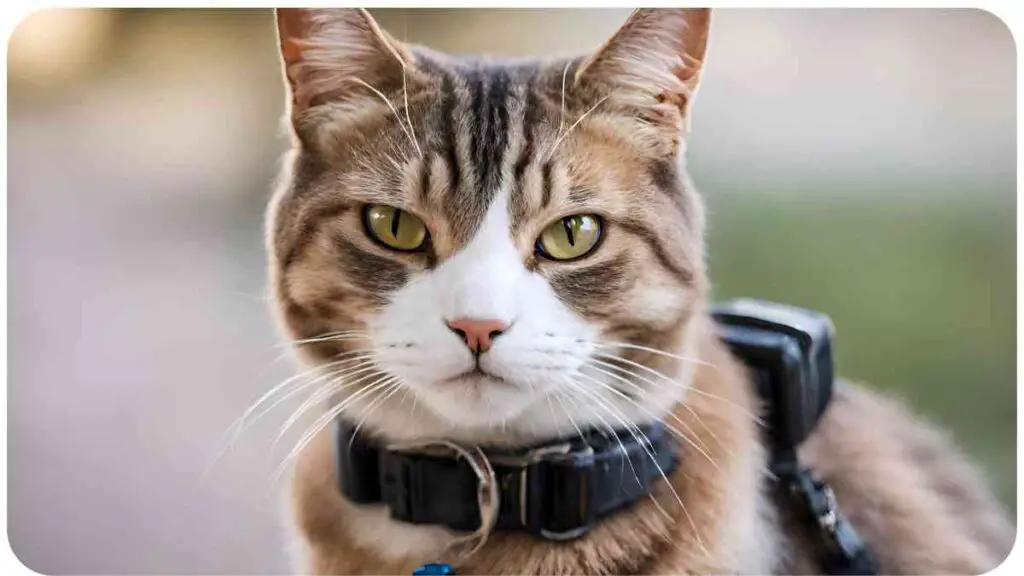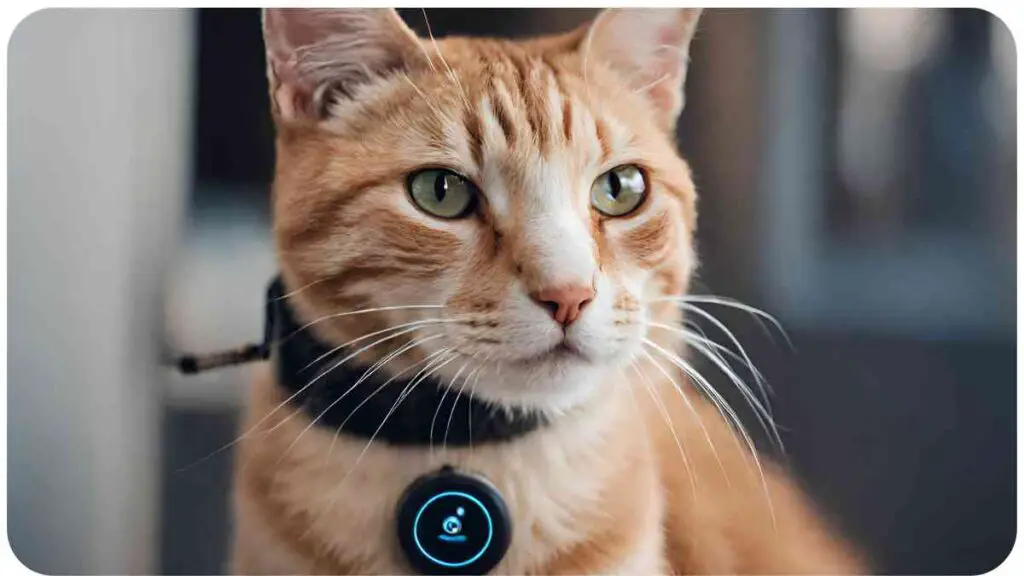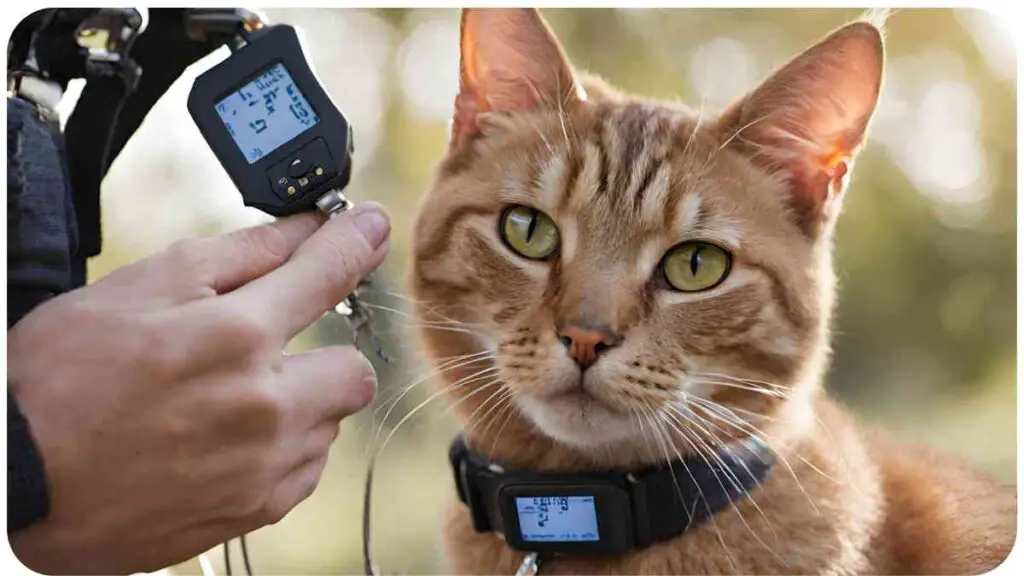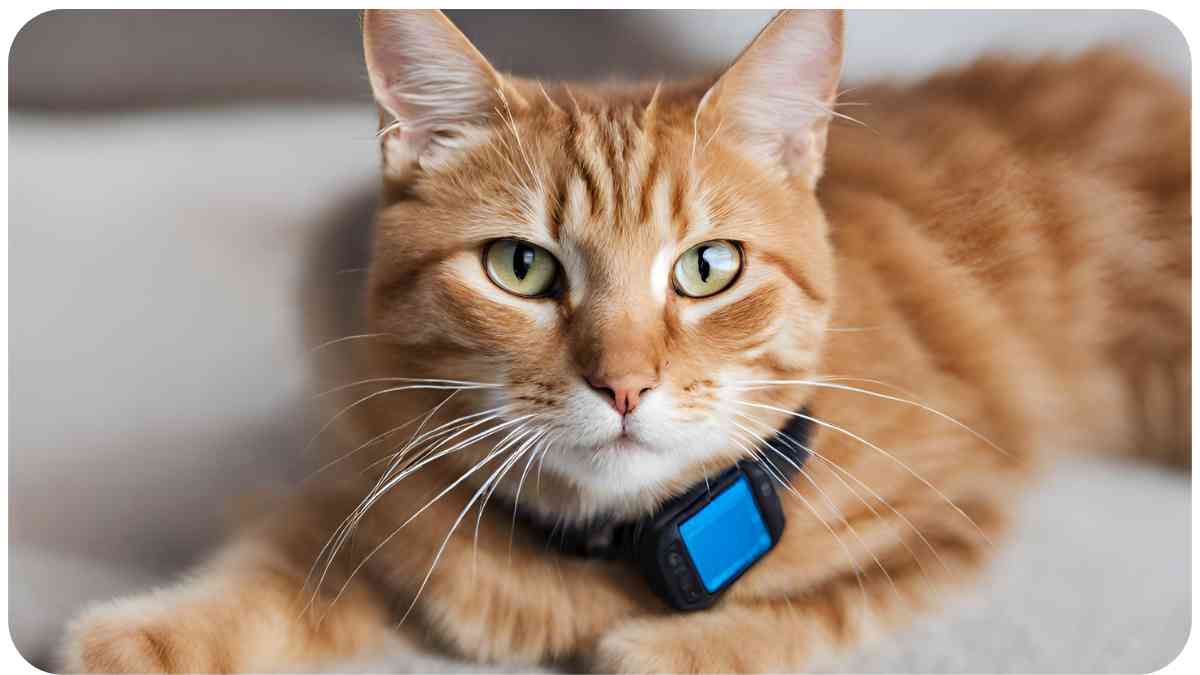Are you experiencing issues with your cat’s GPS collar? These handy devices can be a lifesaver for outdoor cats, giving you peace of mind while they roam. However, like any technology, GPS collars can encounter problems.
In this guide, we’ll explore common issues cat owners face with GPS collars and provide troubleshooting tips to ensure your feline friend stays safe and sound.
| Takeaways |
|---|
| 1. Signal interference can affect GPS tracking accuracy. |
| 2. Regularly check and optimize battery life for uninterrupted usage. |
| 3. Ensure proper fit and placement of the GPS collar for reliable performance. |
| 4. Regular maintenance and monitoring are essential for effective GPS collar usage. |
| 5. Training your cat to wear the collar and reviewing tracking data can enhance safety and peace of mind. |
Understanding GPS Collars for Cats

Before diving into troubleshooting, let’s first understand how GPS collars work for cats. These collars utilize global positioning system (GPS) technology to track your cat’s movements. They often come equipped with features like real-time tracking, geofencing, and activity monitoring. By syncing with a mobile app or website, you can keep tabs on your cat’s whereabouts at all times.
When troubleshooting your invisible fence, it’s essential to understand the settings and calibration process. Proper adjustments ensure your pet’s safety and prevent escape attempts.
Common Issues with GPS Collars
GPS Signal Interference
One of the most common issues cat owners encounter with GPS collars is signal interference. This can result in inaccurate location data or difficulty obtaining a signal altogether. Factors such as dense foliage, tall buildings, and inclement weather can disrupt GPS signals, causing frustration for pet owners.
To troubleshoot signal interference, consider the following:
- Table 1: Common Signal Interference Factors
| Factor | Impact on GPS Signal |
|---|---|
| Dense Foliage | Weakens signal strength |
| Urban Environment | Buildings may obstruct satellite signals |
| Weather Conditions | Heavy rain or storms can interfere with GPS reception |
By identifying potential sources of interference, you can take steps to mitigate signal disruptions and improve tracking accuracy for your cat.
Battery Life Concerns
Another issue that plagues some GPS collar users is short battery life. Constant tracking and communication with satellite networks can drain the collar’s battery quickly, leaving your cat unprotected if the device dies unexpectedly.
To address battery life concerns, try the following:
A stuck Litter-Robot can disrupt your cat’s routine. Explore quick fixes to common issues like sensor misalignment or litter clumping, keeping your automatic litter box running smoothly.
- Table 2: Tips to Extend GPS Collar Battery Life
| Tip | Description |
|---|---|
| Optimize Tracking Settings | Reduce frequency of location updates |
| Charge Regularly | Keep collar charged to ensure uninterrupted usage |
| Power Saving Mode | Enable power-saving features if available |
By implementing these tips, you can prolong the battery life of your cat’s GPS collar and minimize the risk of it running out of power.
Incorrect Fit or Placement
The effectiveness of a GPS collar depends largely on its proper fit and placement on your cat. If the collar is too loose or positioned incorrectly, it may not be able to obtain a reliable GPS signal, leading to inaccurate tracking data.
To troubleshoot fit and placement issues, consider the following:
- Table 3: Guidelines for Proper GPS Collar Fit and Placement
| Aspect | Description |
|---|---|
| Snug Fit | Ensure collar is snug but not tight around cat’s neck |
| Positioning | Place collar high on the neck for optimal reception |
| Check Alignment | Make sure GPS antenna is unobstructed and facing up |
By adhering to these guidelines, you can ensure that your cat’s GPS collar is positioned correctly for maximum effectiveness.
Troubleshooting Guide
Checking GPS Signal Strength

Before venturing out with your cat, it’s essential to verify the strength of the GPS signal. Weak signals can result in unreliable tracking data, putting your pet at risk of getting lost.
If your Whistle Go isn’t charging, it’s crucial to troubleshoot promptly. Learn how to resolve common issues, ensuring your pet’s safety and your peace of mind during outdoor adventures.
To check GPS signal strength:
- Table 4: Steps to Check GPS Signal Strength
| Step | Description |
|---|---|
| Step 1 | Go to an open area away from obstructions |
| Step 2 | Power on GPS collar and wait for signal acquisition |
| Step 3 | Monitor signal strength indicator on collar or app |
By following these steps, you can ensure that your cat’s GPS collar has a strong and stable signal before allowing them to roam outdoors.
Optimizing Battery Life
Maximizing the battery life of your cat’s GPS collar is essential for uninterrupted tracking. By adopting power-saving measures and regular charging habits, you can extend the collar’s usage time.
To optimize battery life:
- Table 5: Tips for Maximizing GPS Collar Battery Life
| Tip | Description |
|---|---|
| Adjust Tracking Settings | Decrease frequency of location updates |
| Charge Regularly | Establish a routine for charging collar battery |
| Enable Power Saving Mode | Utilize power-saving features if available |
Implementing these strategies can help preserve the battery life of your cat’s GPS collar and ensure reliable tracking capabilities.
Adjusting Collar Fit and Placement
If you’re experiencing issues with GPS signal reception, it may be due to improper collar fit or placement. Taking the time to adjust the collar correctly can significantly improve tracking accuracy.
To adjust collar fit and placement:
- Table 6: Steps to Properly Fit GPS Collar on Your Cat
| Step | Description |
|---|---|
| Step 1 | Ensure collar is snug but not tight around neck |
| Step 2 | Position collar high on neck for optimal reception |
| Step 3 | Verify GPS antenna is unobstructed and facing up |
By following these steps, you can ensure that your cat’s GPS collar is positioned correctly for optimal performance.
Additional Tips for GPS Collar Usage

Regular Maintenance
To keep your cat’s GPS collar in top condition, it’s essential to perform regular maintenance tasks such as cleaning and inspecting the device for any signs of wear or damage.
PetSafe collars offer waterproof features, but understanding their limitations is key. Discover more about waterproofing and maintenance to maximize your pet’s safety and collar longevity.
Training Your Cat
Introducing your cat to their GPS collar gradually and incorporating positive reinforcement techniques can help them acclimate to wearing the device comfortably.
Monitoring Tracking Data
Regularly reviewing tracking data can provide valuable insights into your cat’s behavior and whereabouts, allowing you to detect any unusual patterns or potential issues.
Facing connectivity issues with your Furbo Dog Camera? Efficient troubleshooting is vital. Explore setup tips and connectivity solutions to ensure seamless monitoring of your furry friend.
Conclusion
In conclusion, troubleshooting common issues with your cat’s GPS collar is essential for ensuring their safety and well-being. By addressing signal interference, battery life concerns, and improper fit or placement, you can maximize the effectiveness of the device and enjoy peace of mind while your cat explores the great outdoors.
Remember to follow the tips and guidelines provided in this guide to keep your furry friend safe and sound.
Further Reading
- I Tried to Track My Cat’s Movements with GPS. It Didn’t Go Well: A personal account of using GPS to track a cat’s movements, highlighting the challenges and limitations.
- Apple AirTag for Cats: Pros and Cons: An overview of using Apple AirTag as a GPS tracker for cats, discussing its benefits and drawbacks.
- I Spied on My Cat with a GPS Tracker: An exploration of the author’s experience using a GPS tracker to monitor their cat, examining ethical considerations and privacy implications.
FAQs
How does a GPS collar work for cats?
GPS collars for cats utilize satellite technology to track their movements in real-time. The collar communicates with GPS satellites to determine the cat’s location, which is then relayed to the owner via a mobile app or website.
Are GPS collars safe for cats to wear?
Yes, GPS collars are generally safe for cats to wear. However, it’s essential to ensure that the collar is lightweight, properly fitted, and does not cause any discomfort or restriction of movement for the cat.
Can GPS collars be used indoors?
While GPS collars are primarily designed for outdoor use, some models may still function indoors to some extent. However, signal strength may be weaker indoors, leading to less accurate tracking data.
How long does the battery of a GPS collar typically last?
The battery life of a GPS collar varies depending on factors such as usage frequency, tracking settings, and battery capacity. On average, most GPS collars offer battery life ranging from a few days to several weeks before requiring recharging.
Are there any privacy concerns associated with GPS collars for cats?
Privacy concerns may arise when using GPS collars for cats, particularly regarding the collection and storage of tracking data. Owners should be mindful of who has access to this data and ensure that it is used responsibly and ethically.

I’m Dr. Hellen James, a professional veterinarian with a deep interest in the ways that litter size affects the health of animals. I’ve spent years studying this subject and performing research on reproduction in many different kinds of creatures.

